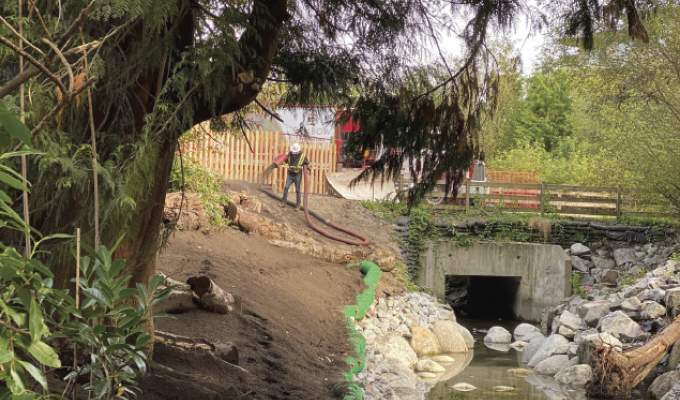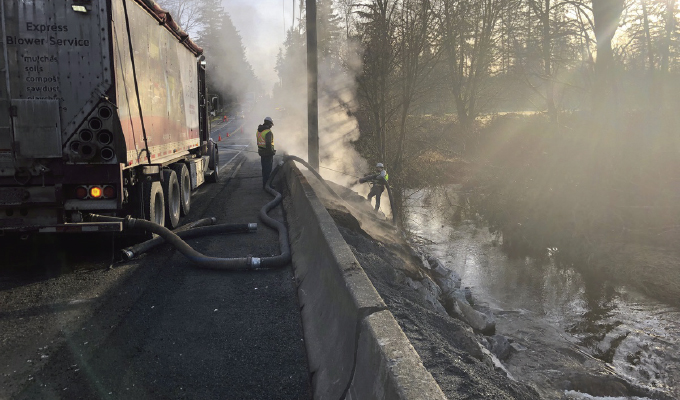Around the world, streambank erosion is a common issue that affects infrastructure, properties, wildlife, and water quality. Yet, a lot of people still implement ineffective methods for erosion and sediment control.
Even though streambank erosion is a naturally occurring process, it can become worse as a result of some anthropogenic activities, like urbanization, removal of streamside vegetation, agricultural use, channel realignment, etc.
Let’s remember that streams are dynamic and constantly changing systems, so streambank restorations should adapt to these conditions over time.
If you’d like to learn more about this, keep reading to discover the best erosion and sediment control method for streambank restorations.
STREAMBANK RESTORATIONS
Streambank restorations are important because erosion and sediment can make the water look muddy, affect surrounding structures, disturb aquatic life, and much more. But that’s not all, a streambank restoration project can even increase property value.
Streams are home to many species and provide several benefits to humans, so it’s important to control erosion and sediment to protect these valuable ecosystems. When doing construction near these ecosystems, applicable laws also require you to have an erosion and sediment control plan.

EROSION AND SEDIMENT
There are several methods for streambank restorations, but depending on the site conditions, some options might be more effective than others. And sometimes, a combination of these erosion and sediment control measures might be needed.
Although silt fences are a common option for sediment control, they tend to be ineffective for streambank restorations. So, they should only be used as a temporary solution, especially on sensitive jobsites.
Want to know alternatives that are more sustainable, earth-friendly, and effective? Let’s check the best methods for erosion and sediment control:
EcoBlanket® with Tackifier. EcoBlanket with naturally sourced tackifier is one of the most effective, not to mention earth-friendly, erosion control methods for streambank restoration projects and it’s installed in a one step, low impact pneumatic process using an Express Blower® machine. This eco-friendly blanket imitates the layer of humus that holds soil particles together and protects soil from erosion in nature. The best part is that EcoBlanket can also be applied in remote areas while providing both immediate and long-term protection. Besides protecting the soil, this streambank restoration method can improve existing soil structure, too. That’s because EcoBlanket is made of recycled green waste materials and can be injected with seeds to revegetate the site with native plants in a process called Terraseeding®. In extreme erosion and sediment control situations, a compost filter sock can be added at the top of the slope, as well.
Filtrexx® FilterSoxx™. Filtrexx FilterSoxx is another effective erosion and sediment control tool that can be used for streambank restoration projects. FilterSoxx is a geotextile mesh tube filled with certified compost material to prevent soil erosion. This compost filter sock creates an erosion control barrier that retains sediment but allows the cleaned water to flow through. And to make things even better, this sustainable streambank restoration tool is also flexible and versatile. FilterSoxx can be filled in place or pre-filled and moved into position.
CLOSING THOUGHT
These erosion and sediment control measures offer long-lasting, sustainable, and earth-friendly solutions to protect and restore streambanks. But before starting a streambank restoration project, remember that the appropriate method for erosion control should be selected and installed by professionals.
SOURCES:
National Geographic – Stream education.nationalgeographic.org/resource/stream
Filtrexx www.filtrexx.com
Denbow Environmental Services www.denbow.com
For More Information:
For more about Express Blower’s Terraseeding and other services, visit www.expressblower.com.
Modern Contractor Solutions, July 2023
Did you enjoy this article?
Subscribe to the FREE Digital Edition of Modern Contractor Solutions magazine.



